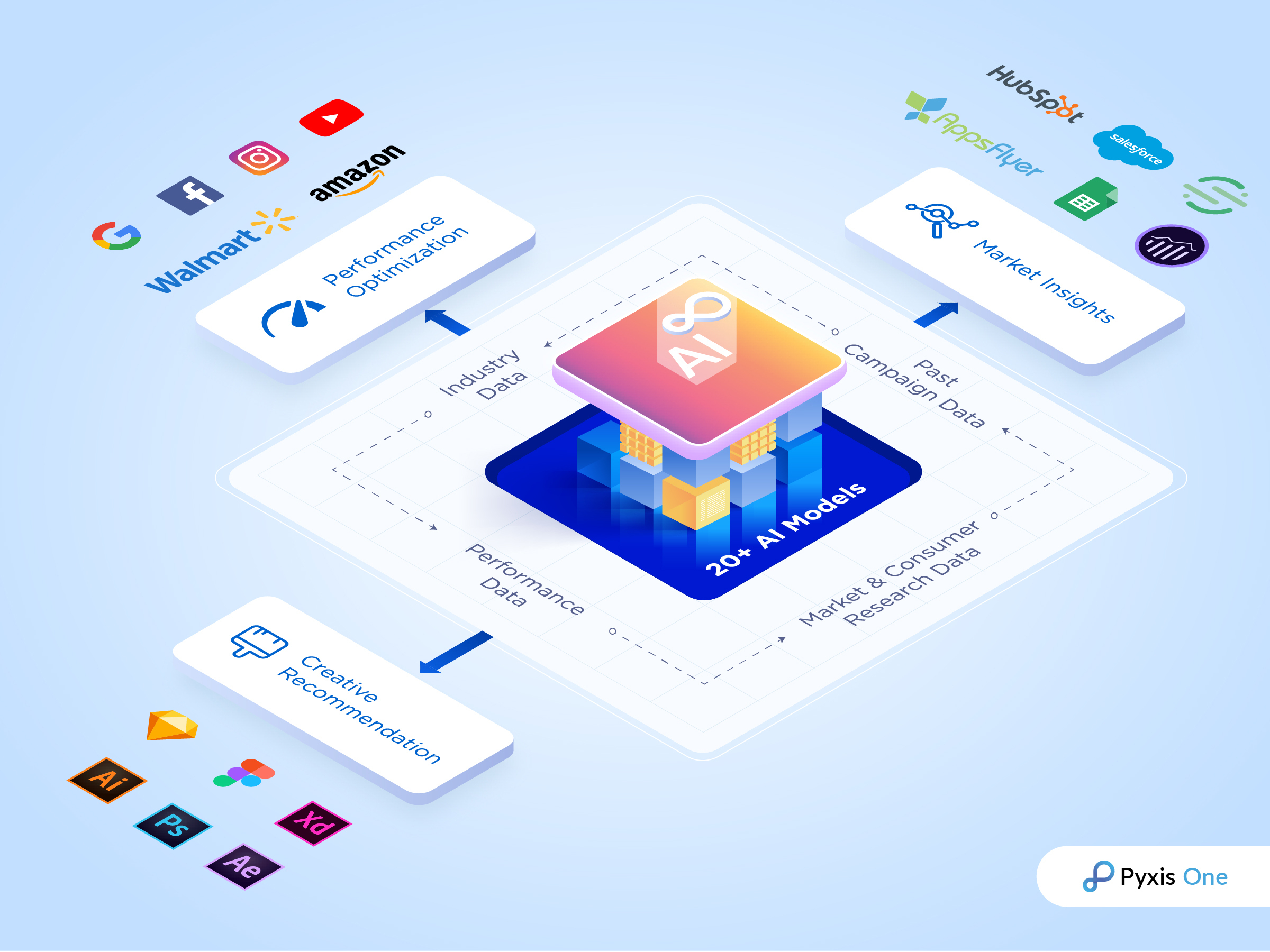Pixis, an AI-powered platform for brands to monitor and orchestrate their marketing campaigns, today announced that it raised $85 million in a Series C1 round led by Touring Capital with participation from Grupo Carso, General Atlantic, Celesta Capital and Chiratae Ventures.
The funding brings Pixis’ total raised to $209 million, and comes at a time when marketers are showing an increasingly acute interest in the potential for AI to enhance their in-house ad efforts. A majority of marketers report having already incorporated AI into their daily workflows, according to a recent survey by The Conference Board, and most expect further adoption of AI to improve productivity.
To wit, Pixis claims to have crossed the $50 million in an annual recurring revenue mark this quarter with a customer base eclipsing 200 brands, including DHL, Joe & The Juice, Sears and Swiggy. Having grown 140% year-over-year in 2023, Pixis expects to achieve profitability in Q4.
“We’ve observed a palpable shift in organizational priorities post-pandemic,” Pixis co-founder and CEO Shubham Mishra told TechCrunch via email. “There’s a heightened emphasis on maximizing profitability and ensuring sustainable growth. It’s not merely about weathering the storm anymore, but about thriving in the new normal.”
Years ago, Mishra and Pixis’ other co-founders, Hari Valiyath and Vrushali Prasade, met at the Birla Institute of Technology & Science in Pilani, Rajasthan, India. The three were researching generative AI, specifically AI to create art and model assets for games.
But once they realized how large the addressable market for AI in marketing was becoming, Mishra, Valiyath and Prasade decided to pivot. Together, they built a prototype to generate marketing assets, which caught the attention of a large bank chain. From there, Mishra, Valiyath and Prasade started laying the groundwork for a full-stack marketing platform for generating assets, dynamically targeting customers and monitoring the performance of campaigns in real time.
That full-stack solution became Pixis.
“Companies, irrespective of their tech proficiency, are looking for tools that can drive results without incurring significant developmental costs or steep learning curves,” Mishra said. “AI is especially powerful for marketers, because there’s no one set of rules, outcomes, or actions that are applicable across every brand, publisher or platform.”

Image Credits: Pixis
Pixis’ platform can be divided into three core pillars: Targeting, creative and performance.
On the targeting side, Pixis uses AI to identify — and ideally convert — audiences for a given brand, product or ad campaign. On the creative end, meanwhile, Pixis can generate assets including texts, images and emails. And when it comes to performance, Pixis offers automated ad bid and budget pacing tools that attempt to mitigate the impact of short-term fluctuations and seasonality.
Each brand that works with Pixis gets it own set of “customized learnings” trained on the brand’s marketing unique data and objectives, Mishra says. Pixis uses these learnings to support its automation and creation tools, also structuring the learnings to deliver them back to the brand in the form of insights and strategies.
“With our AI engines trained on a brand’s performance data, Pixis distributes budgets, finds audiences and generates assets both within and across marketing partners,” Mishra said. “This gives our customers the ability to find and execute delivery actions while dynamically allocating and reallocating spend, aligning the brand’s media budget, target audience and creative assets around patterns discovered by our AI engines.”
Now, that’s a lot of jargon. And this reporter wonders just how Pixis is applying generative AI to create marketing materials. After all, generative AI — whether in-house or third party — has a tendency to make up facts and go off the rails in other unexpected ways.
Mishra emphasized that Pixis has “manual overrides” to steer its AI when necessary and that it takes a “fine-tuning” approach to better control the content that its models create. I’d hope that Pixis encourages human oversight of the platform’s generative AI features. But I can’t be sure, having not been given the opportunity to test them myself.
Pixis seems intent to forge ahead on the AI front regardless, recently launching a chatbot tool called Pixis Analyze that lets users ask questions related to campaigns, marketing data and various “AI actions.” The company’s larger, more ambitious project is Creative Studio, an editing suite for fine-tuning media output by its generative AI models. Creative Studio is available to Pixis’ current brand partners and will launch for new customers next year, Mishra says.
“Our platform pays for itself and improves profitability through unlocked budget efficiencies and time savings that get reinvested back into the business,” Mishra said. “The demand for efficient, scalable and customizable AI has surged, and our products align seamlessly with this new emerging need.”
Mishra says that the proceeds from Pixis’ latest funding round will be used to support Pixis’ R&D, expand its infrastructure to reach more publishers and ad networks and build strategic product and business partnerships. In the near term, Pixis plans to expand its staff of 350 people, focusing on the sales and business development teams in North America and Latin America, and take on debt in Q4 for a potential acquisition. (Mum’s the word on which business Pixis could acquire.)
